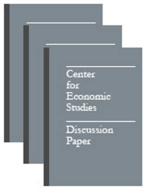
An official website of the United States government
Here’s how you know
Official websites use .gov
A .gov website belongs to an official government organization in the United States.
Secure .gov websites use HTTPS
A lock (
) or https:// means you’ve safely connected to the .gov website. Share sensitive information only on official, secure websites.
-
//
- Census.gov /
- Library /
- Census Working Papers /
- Neighborhood Effects on High-School Drop-Out Rates and Teenage Childbearing: Tests for Non-Linearities, Race-Specific Effects, Interactions with Family Characteristics, and Endogenous Causation using Geocoded California Census Microdata
Neighborhood Effects on High-School Drop-Out Rates and Teenage Childbearing: Tests for Non-Linearities, Race-Specific Effects, Interactions with Family Characteristics, and Endogenous Causation using Geocoded California Census Microdata
Neighborhood Effects on High-School Drop-Out Rates and Teenage Childbearing: Tests for Non-Linearities, Race-Specific Effects, Interactions with Family Characteristics, and Endogenous Causation using Geocoded California Census Microdata
Abstract
This paper examines the relationship between neighborhood characteristics and the likelihood that a youth will drop out of high school or have a child during the teenage years. Using a dataset that is uniquely wellsuited to the study of neighborhood effects, the impact of the neighborhood poverty rate and the percentage of professionals in the local labor force on youth outcomes in California is examined. The first section of the paper tests for non-linearities in the relationship between indicators of neighborhood distress and youth outcomes. Some evidence is found for a break-point at low levels of poverty. Suggestive but inconclusive evidence is also found for a second breakpoint, at very high levels of poverty, for African-American youth only. The second part of the paper examines interactions between family background characteristics and neighborhood effects, and finds that White youth are most sensitive to neighborhood effects, while the effect of parental education depends on the neighborhood measure in question. Among White youth, those from single-parent households are more vulnerable to neighborhood conditions. The third section of the paper finds that for White youth and Hispanic youth, the relevant neighborhood variables appear to be the own-race poverty rates and the percentage of professionals of youths’ own race. The final section of the paper estimates a tract-fixed effects model, using the results from the third section to define multiple relevant poverty rates within each tract. The fixed-effects specification suggests that for White and Hispanic youth in California, neighborhood effects remain significant, even with the inclusion of controls for any unobserved family and neighborhood characteristics that are constant within tracts.
Others in Series
Working Paper
Working Paper
Working Paper
Share
Related Information
Some content on this site is available in several different electronic formats. Some of the files may require a plug-in or additional software to view.
 Yes
Yes
 No
NoComments or suggestions?


Top

